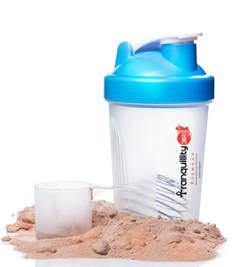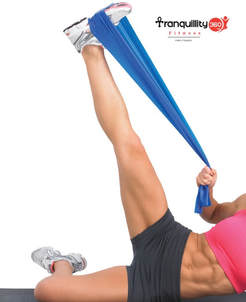 Often times we hear the claims or see an advert: This is the new diet that's delicious, easy to stick with, and guaranteed to help you lose weight effortlessly. Or, often times it’s supposed to build muscle, protect your joints some even say its prevent Alzheimer's. No matter the diet and whatever the claim, there's a good chance that it is, indeed, too good to be true, Right? In the turn of the century, high protein diets are among the most popular, whether the protein is consumed as a supplement (protein shakes for body builders, athletes, even serial dieters!) or simply a larger than usual portion of a balanced diet (such as The Zone, Atkins or Paleo Diets). A lot of people today curious about one of these diets or have already tried them, buy all different type of supplement shakes – here is one for you, did you ever wonder whether too much protein might cause a problem? How much protein do we really need? Protein is essential for life – it's a building block of every human cell and is involved in the vital biochemical functions of the human body. It's particularly important in growth, development, and tissue repair. Protein is one of the three major "macronutrients" (along with carbohydrates and fat). It only wise to ensure you get enough protein to keep off malnutrition; it may also be important to preserve muscle mass and strength as we age. And, in recent years, some have advocated a higher protein diet to rev up metabolism to make it easier to lose excess weight, though success in this regard is highly variable.
Is too much protein bad for you? The short answer is yes. As with most things in life, there can be too much of a good thing and if you eat too much protein, there may be a price to pay. Among the conditions linked to high protein diets are:
How much Protein is too much? It's hard to provide a specific answer since so much is still uncertain and the experts themselves don't agree. However, for the average person (who is not an elite athlete or heavily involved in body building) it's probably best to avoid more than 2 gm/kg; that would be about 125 grams/day for a 140-pound person. New information could change our thinking about the maximum safe amount, but until we know more about the safety, risks and benefits of high protein diets, this seems like a reasonable recommendation. What Should you do if you want to maintain a high protein diet? If you want to maintain a high protein diet, the details matter:
0 Comments
 Online personal training is rising rapidly, both in Europe the Americas and the rest of the world. In many ways, it's exactly like being trained by an expert in a gym: you're given a bespoke programme that you have to follow in order to reach your goals. The major difference, of course, is that the trainer is not next to you when workout or correcting you when you are doing something. Working as personal trainer I am often asked if of online person training really works or if people gain real results, my answer always the same “depends on the person and how much effort they are willing to give in order to achieved their goal. There are people who will find it as an effective and time-efficient way to work out, while many others will miss the in your face personal trainer. Online personal training has quite a bit of cons and pros like everything else from protein shake to shaker bottles, you just have to find something that works for you. The Plus Points Easy contact with world class fitness expert Many sought after and noted fitness professionals are already offering online versions of their training services. This is great for the consumer, because it provides instant access to highly skilled coaches from all over the world. A good reputation can travel a long way in the fitness industry, so online training allows the everyman/woman to work with world class trainers. They are personal trainers who are based in places like Jamaica who training people in Turkey and Dubai, recently one of Tranquillity 360 Fitness Personal Trainers, start working with a group of ladies based in Saudi Arabia. That goes to show how fast and widely spread online personal training is. Another catch from online training is that also gives you access to specialists in specific areas. Rather than be limited to the knowledge bank of the trainers at your local gym, you can call seek out the advanced understanding of people from all over the world or purchase specific training/workout plan to fit your goals, some people just want to build muscle some just want to build butt and with online personal training you now get those programs. Quick reference a trainer’s ability With our digital world as socially connected as it is, you can learn a lot about a potential online trainer long before you make first contact. Start by reading their client reviews, look at their mentions in the media and have a browse of their social media activity and article writing. You will soon get a feel for whether they are the type of individual you would be comfortable working with and if they are keeping up to date with the industry in general. Not Expensive When a standout personal trainer begins to develop a reputation for delivering results, they tend to get busy very fast. The result of this is that they get booked up pretty soon and new clients find it very difficult to get sessions. Such demand inevitable leads to a rise in session prices, making the more sought after trainers too expense for most to work with (some trainers in the UK charge £200 per hour). With online personal training you can get same type of trainer that will be able to provide a month-long training plan for the same cost as an hour training with them. Train when you want as long as you want to With online personal trainer deliver a workout program to you electronically means that you can access your workout on your mobile devices at any time and in any location, which is great for those that travel frequently or do not want to be restricted by gym opening times. Continue support Many online trainers such the personal trainers at Tranquillity 360 Fitness can provide you comprehensive online support in the form of answers to emails, video calls and even dietary guidelines and the ability to have your weekly food journal assessed. With these perks built into the initial upfront costs you are guaranteed personal attention throughout your customer experience. The Down Side Motivation While a high quality program can be delivered with ease over the phone or email, there's zero guarantee that it will be successfully completed. One of the main benefits of working with a personal trainer is that they get you through your workouts even when you don't want to be there. That extra motivation to actually turn up at the gym, and to push through tough workouts – just isn't available through an online programme. Online training does work and the results are amazing, but it's definitely not for you if you are not determined to achieved your fitness goals.  Do you know that many people around the world today has balance problems? Each year 1 in 3 people experience a fall! In fact, Falls are the second leading cause of accidental or unintentional injury deaths worldwide. In 20017, direct medical costs for fall injuries totalled £31 billion worldwide. By 2020, the costs are projected to reach £44 billion. The good news however, is that many of these falls can be prevented with the right training or exercises and diet. What are the reasons that make a person feel dizzy, spinning of the room or difficult to maintain balance? Disturbances of the labyrinth in the inner ear, brain, cerebellum, blood circulation or peripheral nervous system are all the common causes for the balance problems. Arthritis, joint pain, stroke, visual impairment, back or neck problems, myelopathy due to cervical spondylosis, parkinsonism and fall of blood pressure on standing (orthostatic hypotension) are other causes of balance problems and can contribute to risk of falls among of but the young and elderly. Certain medications that depress the central nervous system may also increase the rate of falls by increasing the lack of coordination, one of the main reason why I would always, recommend a good exercise program for people who are suffering illness that required medications which depress the central nervous system. Research have found the evidence for the effectiveness of several exercises in ex clinical balance outcomes in all age group across the all gender:
|
AuthorsThis blog is updated by Tranquillity 360 fitness personal trainers, as well as other guest bloggers. Archives
July 2021
Categories |

 RSS Feed
RSS Feed